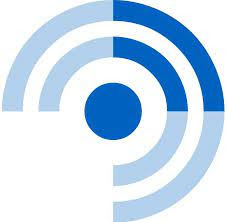
The angel went forth to tell her that she would conceive and give birth to a son, who would become the savior of the world. Mary got troubled by these words, wondering what kind of greeting this might be.
This event took place in northern Israel, in the city of Nazareth, about a three-hour journey from Israel's capital, Jerusalem.
Nazareth is a small city located uphill. It does not boast the same cleanliness as other parts of Israel, and its houses are not as modern. The majority of its residents are Muslims, making it the largest Arab city in Israel.
Despite this, Christians and Muslims coexist peacefully in the city, with mutual respect for each other's history.
One of the most noticeable features of Nazareth is the abundance of churches scattered across the city, most of which belong to Christian denominations such as Methodists, Baptists, and Orthodox Christians.
On the hill where Gabriel began his message, stands the Basilica of the Annunciation. This church, built in 1956 by architect Giovanni Muzio, was designed to provide a sanctuary for visitors from around the world to reflect on the message given to the Virgin Mary.
The Basilica of the Annunciation is a key attraction for tourists visiting Israel, particularly Nazareth. Upon arrival, visitors are welcomed by artistic depictions of the Virgin Mary, created by various countries according to their cultural perspectives.

African, European, and South American countries have contributed images of Mary, which are displayed in the church. Many visitors, predominantly women, come to see this historic site. However, like other parts of Israel, the current war has significantly reduced the number of tourists.
Zalina, a tour guide mainly hosting visitors from South America, told IGIHE that she usually attends to visitor from Brazil and it's exciting to see people from different cultures and languages every year.
'However, fewer people are coming these days. It's sad to see this place like this. The reason is that people are afraid to visit Israel or the Middle East, and many airlines have canceled their flights. Even those who want to come cannot find a way.'
The Basilica is divided into two parts. One section preserves the history of the site where the Virgin Mary received the message. Visitors are shown the spot where Mary sat and the pillar where it is said Gabriel stood. Unlike other parts of the church, this section retains its ancient appearance.
The upper section of the Basilica is used for Mass, featuring artworks depicting Jesus' early life, from conception and birth to how his family fled to Egypt.

There is a permanent altar for prayer, where visitors give thanks and seek intercession from the Virgin Mary. Many women, inspired by Mary's story, pray while carrying rosaries, often reciting them as they walk.
In the surrounding area, souvenirs related to the Virgin Mary, such as images, rosaries, and other religious items, are sold. Every day, locals gather at the Basilica for morning Mass in Italian and Arabic.
Nazareth is just an hour's drive from Lebanon. At the Israel-Lebanon border, recent attacks by Hezbollah caused significant destruction, forcing many residents to flee. During those times, residents of Nazareth described the situation as tense.
Zalina described the turmoil during the war with Hezbollah, noting that alarms rang out across Israel, including in Nazareth, where both Christians and Muslims coexist peacefully.
She is sad that Hezbollah's attacks spared no one, targeting cities like Nazareth and Jerusalem, sacred to many. Despite the devastation, she expressed relief that calm has been restored and life is returning to normal as people move forward.






























IGIHE
